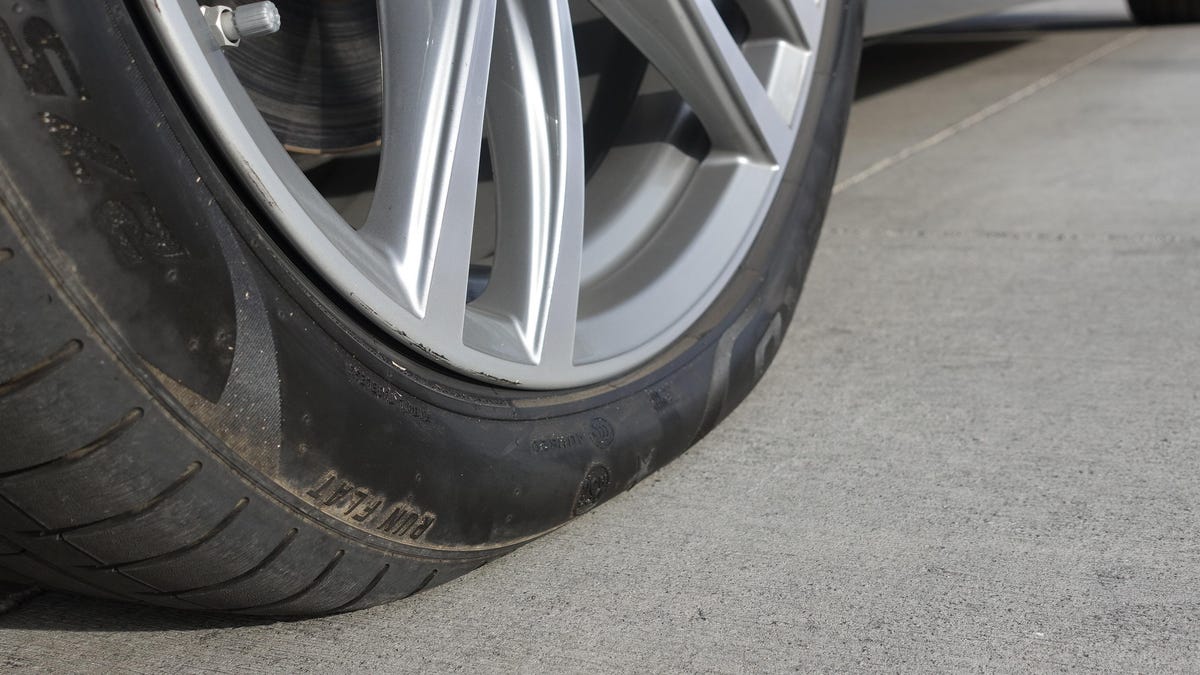What happens when a run-flat tire goes flat
A recent tire blowout in a BMW puts the spotlight on the pros and cons of run-flat tires.
Run-flat tires aren't new, first debuting back in the 1930s. Run-flat tires are still used today, using a reinforced sidewall that can support a vehicle's weight after the tire experiences a total loss of air pressure. In theory, this should allow you to reach a service center to fix or replace the tire, but what actually happens when a run-flat tire goes flat?
Rewind to last weekend, when the passenger-side rear tire of my 2018 BMW 640i Gran Turismo test car had a brief encounter with a Detroit-style pothole. Normally in this situation, I'd just pull over, get the spare, swap 'em out and be on my way. But the Bimmer, shod in 245/45R19 Pirelli P-Zero run-flat tires, required a different approach.
I was about 10 miles from civilization at the time of the blowout, well below the run-flat tires' recommended driving distance of 50 miles. The warning screen on the 640i's iDrive infotainment display said I could safely drive as fast as 50 miles per hour, but with severe vibration coming through the chassis, the car pulling to the right and emitting a terrible grinding noise, I never went above 25 mph. Just because you can go 50 mph on a run-flat doesn't mean you should.
Reinforced sidewalls allow run flat tires to be useable even at 0 psi.
Despite appearing fine at first glance, the tire was actually severely damaged. The inner sidewall had a large gash and the impact was hard enough that it even bent the 640i's wheel. The BMW had to be towed to a dealership some 50 miles away (a free service through the manufacturer). Two days later, it was back on the road.
Run-flat tires are expensive; a replacement P-Zero costs over $420 with labor and taxes. In my case, the repair cost was not covered by BMW, and while Pirelli has its own warranty, it's conditional. According to the company, a tire can be replaced free of charge if it "becomes unserviceable due to workmanship or materials anomalies or road hazard injury during the initial warranty period, which is one year from the date of original retail purchase of the vehicle or purchase of replacement tires (purchase receipt required) or within the first 2/32-inch of the original usable tread, whichever occurs first." But even then, the tire has to be individually inspected by claims adjusters, and might not end up being covered.
Yikes! While all was fine on the outside of the wheel, the inside was a different story.
Furthermore, while standard tires can often be repaired, run-flats are much harder to fix. In fact, Pirelli specifically does not recommend you repair a damaged run-flat, since driving on the tire with little to no pressure can wreak havoc on the internal structure, rendering them unsafe. Warranty and repair guidelines differ between tire manufacturers, but even if you encounter a nail in the road or some other easily repairable puncture, in the specific case of this BMW, you're looking at a costly brand-new tire every single time.
Something else to consider: My incident occurred in a well-populated area of Northern California. What if I had been, say, on Highway 50 in Nevada? Dubbed the Loneliest Road in America, there isn't a BMW dealership within 250 miles. Not having a spare tire onboard isn't the smartest idea if you frequently find yourself in rural settings. And if you think you'll find a P-Zero run-flat on hand at any old tire shop, think again. Because these tires aren't fitted to most vehicles, many repair shops don't stock them.
The other big run-flat tradeoff is how these tires negatively affect a car's ride and handling characteristics. The thicker sidewalls not only result in increased road noise, but a harsher overall ride quality. In the case of a Mini John Cooper Works Hardtop I recently tested, the run-flat tire option made it too crashy to drive daily.
There's a lot to be said for the reassurance of driving on a flat after you've had a puncture, but if you want my advice, skip the run-flats. One-time, conditional convenience is nice, but in the big picture, run-flats are likely more trouble than they're worth.
Originally published last year.


